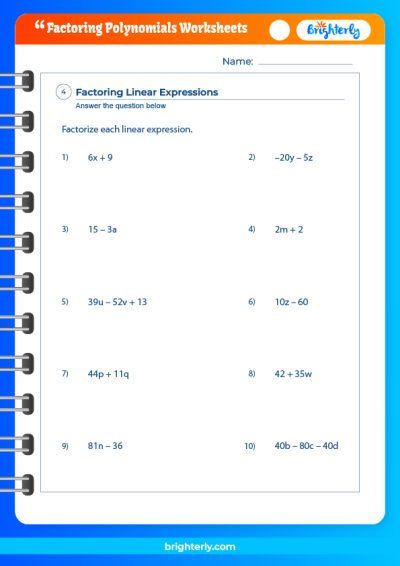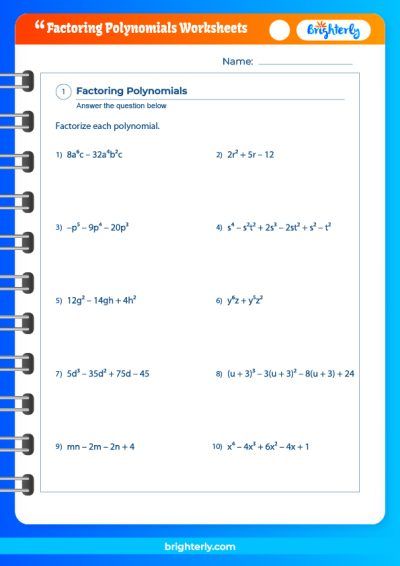Cubic Polynomial – Formula, Definition With Examples
Updated on January 8, 2024
Welcome to Brighterly, your trusted partner in making math engaging and accessible for children. In this guide, we’ll delve into the world of cubic polynomials. Designed with young learners in mind, our focus is on presenting this key math concept in a clear, concise manner. At Brighterly, we believe in simplifying complex ideas and providing practical examples to enhance understanding. Let’s explore the formula, solving methods, and real-life applications of cubic polynomials together.
Cubic Polynomial
A cubic polynomial is a math expression with a degree of three. It looks like , where , , , and are numbers and is not zero. This kind of polynomial is common in algebra. It helps solve many problems and is used in fields like physics. A cubic polynomial’s graph usually has a curve shape, which can be helpful in understanding its properties.
Formula of a Cubic Polynomial
The formula for a cubic polynomial is . Here, each letter represents a number. These numbers shape the polynomial’s graph. This formula is a basic tool in algebra, helping us understand how cubic polynomials behave and how their graphs look.
Solving Cubic Equations
To solve a cubic equation, we find the values of that make the equation true. This is like solving a puzzle to find where the graph crosses the x-axis.
Factorization Method
Factorization breaks the cubic polynomial into simpler parts. We start by finding one root, then use that to simplify the equation to a quadratic one, which is easier to solve.
Synthetic Division
Synthetic division is a quicker way to divide polynomials. It’s useful for breaking down cubic polynomials and finding their roots. This method turns a complex problem into a simpler one.
Graphical Method
Graphing the polynomial helps us see where it crosses the x-axis. These points are the equation’s roots. This method is good for getting a visual understanding of the problem.
Examples of Cubic Polynomials
-
: This is a typical cubic polynomial. Its roots can be found using the methods above. -
: Another example. Solving it shows us where it crosses the x-axis.
Practice Problems on Cubic Polynomials
- Solve
. - Factorize
. - Graph
and find the roots.
FAQs on Cubic Polynomials
What is a Cubic Polynomial?
It’s a math expression with three terms, usually written as .
How do you find the roots of a Cubic Polynomial?
Use methods like factorization, synthetic division, or graphing.
Can a cubic polynomial have more than three roots?
No, it can have up to three roots.
Why are the coefficients in a cubic polynomial important?
They determine the shape and position of the graph.






